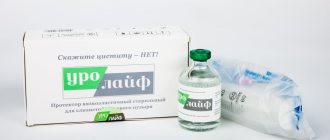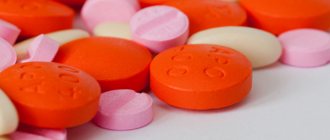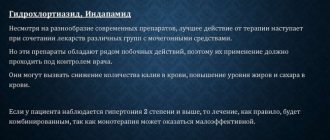How is a kidney ultrasound performed?
The Vash Doctor clinic has all the necessary modern equipment to carry out appropriate diagnostics with the most accurate results.
The examination can be carried out on the same day of treatment, and the procedure itself is safe and painless:
- the patient lies down on the couch, having previously undressed to the waist;
- A special gel is applied to the skin of the abdomen and sides, which ensures good sliding of the sensor;
- the device reflects ultrasound waves from the kidneys, forming an image on the screen;
- The duration of the entire process is no more than 30 minutes.
You can make an appointment for an ultrasound scan for kidney stones on the most convenient day for the patient, seven days a week.
Common symptoms and manipulations in urology:
- Pain when urinating
- Discharge from the urethra
- Itching in the urethra
- Short frenulum of the foreskin
- Prostate massage
- Prevention of casual sex
- Frenum plastic surgery
- Circumcision
- Kidney pain
- Perineal pain
- Stones in the kidneys
- Pus in urine
- Catheter removal at home
- Bougienage of the urethra
- Urinary retention
- Urological examination
- Papillomas on the foreskin
- erectile disfunction
- Make an appointment with a urologist
When is a kidney ultrasound required?
The formation of kidney stones is the first sign of the development of urolithiasis. The most common cause of kidney stones is limited urine output.
An ultrasound may be prescribed for certain symptoms:
- cutting pain in the lumbar region;
- uncharacteristic shade of urine;
- urination is accompanied by pain;
- the presence of other inflammatory processes that were diagnosed in a different way;
- urinary system injuries.
The resulting kidney stone can cause acute blockage of the urinary organs, causing severe discomfort, accompanied by pain in the side, radiating to the groin. Pathology developing in the lower third of the ureter is manifested by frequent urination with pain.
Methods for diagnosing urological diseases:
- Calling a urologist to your home
- Diagnosis of kidney diseases
- Diagnosis of bladder diseases
- Diagnosis of prostate diseases
- Diagnosis of scrotal diseases
- Diagnosis of sexually transmitted infections
- Urine tests
- Tests for STIs
- PSA tests
- Ultrasound at home
- Kidney ultrasound
- Ultrasound of the prostate
- Ultrasound of the bladder
- Urological ultrasound at home
- Urethral swab
- Ultrasound of the penis
- Transrectal ultrasound
- Prostate juice tests
- Ultrasound of the genitourinary system
Detailed description of the study
On the eve of the study, consumables (container) must first be obtained from any laboratory department.
Urinary stone analysis is an important step in the evaluation of patients with stones in the urinary system. Knowledge of the composition of stones provides basic information about the pathogenesis of the disease, including metabolic disorders, the presence of an infectious process, and even the metabolism of medications taken.
Obtaining stones for study is possible through natural excretion in urine, as well as through surgery and lithotripsy (crushing stones). Stones (calculi) are insoluble substances (deposits) that are most often formed from mineral salts - calcium oxalate and phosphate, tripelphosphate (ammonium and magnesium phosphate), urate (uric acid) or cystine. They can form in any part of the urinary system and vary significantly in size (from 1 mm to several centimeters). About a third of the stones consist of Ca3 (P0 4)2, MgNH4 PO 4, CaC2 4 or mixtures thereof, that is, these are oxalate (oxalate), phosphate (phosphate) or mixed urinary stones. The formation of stones is facilitated by excessive release of Ca ions, for example in hyperparathyroidosis, osteoporosis and in cases of unusually high calcium content in food. In patients with gout, as a rule, there are stones consisting mainly of uric acid, less often - of its ammonium or sodium salt. These stones are called uric acid, or urate. Cystine stones (cystine deposition) are almost constantly observed in patients with cystinuria. Typically, stones form in the collecting system of the kidney, migrate to the ureter and bladder, and then pass out during urination. However, not all stones can pass away on their own; in these cases, surgical intervention (lithoextraction or extracorporeal shock wave lithotripsy) is necessary.
Diagnosis of the disease
Detection of urolithiasis is based on the symptoms present in the patient. An anamnesis is collected: the patient’s complaints, features of his lifestyle, events preceding the deterioration of his condition. A preliminary diagnosis can be made based on characteristic symptoms - cloudy urine, attacks of renal colic, problems with urination, etc.
In addition to the medical history, the doctor may prescribe the following tests:
- Biochemical urine analysis. The presence of bacteria, salt crystals, etc. is detected.
- Blood test for creatinine and urea.
- Ultrasound examination of the urinary system. This method allows you to identify all x-ray positive and x-ray negative stones. Ultrasound determines changes in the structure of the kidneys and the location of stones.
- X-ray examination. Survey urography is often used, which reveals most of the existing stones (with the exception of uric acid and protein stones, which do not give a shadow on the images).
In some cases, MRI or computed tomography with contrast is used to determine the density of stones if the size of the foreign bodies is very small.
Lower calyx stones: choice of DLT or PCNL?
*Pirozhok I.A., **Mazurenko D.A. *Military Hospital Center for Shockwave External Lithotripsy, Chernivtsi, Ukraine ** European Medical Center (EMC), Moscow, Russian Federation
Introduction: Recently, there has been a paradigm shift in the choice of tactics for treating lower calyx stones (LCS) due to the preference for active tactics of stone removal using the percutaneous method (PCNL) or the method of retrograde intrarenal surgery (RIRS) over conservative extracorporeal lithotripsy (ESWL) . Our work reflects our experience in ELF treatments using PCNL, EBRT and their combination (“sandwich therapy”).
Material and methods: Among all patients in the period from 2011-2015. EBRT (380), patients with ELF accounted for 15% (57). Among them: men – 55%, women – 45% of different age groups (from 20-75 years). According to the chemical composition of ENP: urates – 22%, oxalates – 46%, phosphates – 32%. By ELF size: up to 10 mm - 42%, 11-20 mm - 53%, > 20 mm - 5%. Lithotripsy was performed on an outpatient basis using a stationary Dornier Lithotripter S (Dornier MedTech). Among all PCNL performed (152), stones in the inferior calyx accounted for 24% (36). PCNL was performed using X-ray-assisted (C-arm) puncture access into the renal cavity system through the lower calyx, in the case of ELF - “on the stone” according to Alken (16 patients), using the “double-shot” method according to Smith (20 patients). Nephroscopy was performed with a Karl Storz nephroscope in an Amplatz low-pressure system (30 Fr.), lithotripsy was performed with a Karl Storz Calcuson ultrasonic contact lithotripter in a Uromat aspiration system, litholapaxy was performed with tripod-type forceps. All surgical interventions ended with the installation of a nephrostomy for 3 days. Before surgical intervention in case of complex stones or anatomical features of the kidneys, patients underwent a spiral CT scan of the kidneys with determination of X-ray density of the stone (HU), 3D reconstruction/subtraction of the lower calyx and adjacent structures of the kidney to plan the optimal shortest approach.
Results: DLT efficiency of ELF fragmentation in one session was 46%, in two sessions – 53%, in three sessions – 1%, respectively. The period of elimination of fragments from the lower calyx ranged from 5 to 28 days. In 7 (13%) patients, there was no effective elimination (residual fragments), which required further PCNL. In 6 (11%) patients, an obstructive stone track was observed, which required ureteroscopy/ureteral stenting. Lithotripsy in one session was carried out with a frequency of 70/80 beats/min, the average number of strokes was 2600, the average power was 37%. Lithotripsy in two or more sessions was carried out with a frequency of 70/80 beats/min, the average number of strokes was 6000, the average power was 42%, the interval between sessions was 5-7 days. The total duration of outpatient treatment (EBRT sessions - elimination) ranged from 5 to 32 days. In 1 patient, a subcapsular renal hematoma formed after the DLT session (conservative treatment). The effectiveness of PCNL was 97%; 1 patient had clinically significant residual fragments in the lower calyx, which were subsequently fragmented by DLT (“sandwich therapy”). No severe complications were observed in the postoperative period. The average length of hospital stay was 4 days. In the postoperative period after 12-16 months, 5 (14%) patients experienced recurrence of ELF.
Conclusions: The above literature data and our results support the choice of active tactics “active stone removal” using the PCNL method for the treatment of ELF. Based on the experience of evidence-based medicine, we use DLT for the treatment of ELF when the stone size is up to 10 mm and there is an effective connection between the calyx and the pelvis (obtuse cervicopelvic angle, the neck of the calyx is up to 5 mm wide and up to 7 mm long). Indications for PCNL are: stone size greater than 10 mm, acute cervicopelvic angle, narrow neck of the calyx, stone in the calyceal diverticulum, large residual fragments of the calyx/ineffective early radiotherapy.
Magazine
V Russian Congress on Endourology and New Technologies, 2021
Comments
To post comments you must log in or register
Kidney stones 5 mm
No one is immune from the formation of kidney stones. Urolithiasis develops in a large number of people, regardless of gender and age. Even in young people, doctors often diagnose the presence of sand, which, in conditions of poor nutrition, poor ecology, and bad habits, is rather a variant of the norm. If the disease is not treated, the sand will sooner or later turn into stones. In some cases, they can come out on their own through the urinary tract. In some cases, they have to be crushed using ultrasound, laser, or mechanical methods. What to do if there are 5 mm stones in the kidneys, the doctor will tell you after a thorough diagnosis.
Is a 5 mm kidney stone dangerous?
Treatment for kidney stones measuring 5-6 millimeters is usually conservative.
With appropriate therapy, such stones have every chance of leaving the body naturally, through the ureters and urethra. This is what doctors usually prescribe: • Preparations for resorption (reduction) of stones, depending on their salt composition; • Antispasmodics to facilitate the passage of stones through the ureters and urethra; • Painkillers – reduce pain, alleviate the symptoms of renal colic; • Hemostatic – if the sharp edges of the stones injure the mucous membrane and blood appears in the urine; • Diet therapy – the diet is selected based on data on the salt composition of stones; • Physiotherapy – magnet, electrophoresis, ultrasound – relieve inflammation, relieve pain; • Antibiotics – in case of infection in the kidneys or urinary tract due to trauma from stones.
If pills or injections do not help, a stone clogs the ureter, or kidney failure develops, they resort to surgical intervention. Therefore, it is better not to lead to such a state, and to begin treatment for urolithiasis as early as possible.
Where to sign up if there is a 5 mm stone in the kidney?
Patients who have been diagnosed with a stone in the left or right kidney can undergo treatment at our Center for Modern Medical Technologies.
We will double-check the diagnostic data, do another ultrasound, confirm the diagnosis with tests, and select the optimal method of therapy. We employ experienced doctors who regularly confirm their qualifications abroad. We use evidence-based medicine protocols and never prescribe unnecessary medications. Our clinic is equipped with everything necessary for emergency and planned operations. Affordable prices, no queues, comfortable rooms and professional psychological support - this is already half the path to recovery.










